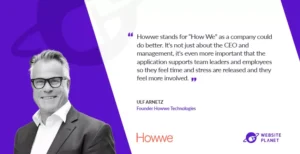Let us talk about insight. That is where strategy acceleration starts; with the insight that there is a need for a new strategy. It is not always a new strategy that is needed. It can also be the existing strategy that needs to be accelerated or that parts of it are not executed as planned.
Regardless of the reason for the change, it is important to make a quick decision to initiate the work. This sounds like an easy process — we just need to start, right? But when exactly is the right time to start a strategy execution? There is no precise answer to this question. We do know that it always starts with the insight that something has to be done.
Signals of a need to accelerate strategy
Here is a list of common signals indicating that the company needs to come to insight and therefore start the strategy acceleration. Read this carefully. Are any of these points relevant for your company?
• The company is doing well, but management knows that within a few years the company won’t be able to continue growing nor generate the same profits as today.
• Increased competition.
• Changes in the market, due to new and more innovative players, e.g. part of a disrupted market.
• Difficulties to quickly adjust to increasing external threats and emerging demands.
• Increasing salaries and costs, but difficult to see how the profit margin will increase at the same rate.
• Undesirable behavior from managers or employees, e.g. old patterns, routines, and ways of working that hinder necessary improvements.
• The organization is too silo-oriented, i.e. the different departments/functions work too much in their own areas and there is not enough collaboration between the different entities.
• Low employee or customer satisfaction index.
The list could be longer, but these are common warning bells. When these start chiming, it is time to launch a strategy execution.
Act quickly when the insight occurs
When the signals have been identified, management needs to act quickly. We often see how companies act much too late.
When the insight strikes, the decline has been happening for such a long time that the competition might already be passing the company by. We have met competent business leaders and management groups who miss the market signals and are overly reliant on “it will pick up again next quarter”.
Arriving at an insight demands bold leaders who have the ability to truly have the company’s best interest at heart. In the short as well as long term.
We sometimes see leaders who put a lot of energy into explaining why things are not going as well as they should or why they cannot “make it happen”. If they would spend this thought energy on understanding the importance of acting swiftly, the financial situation of many companies would look very different. A lot of money is lost in a passive strategy approach.
With Howwe companies are able to align their strategy and workforce and identify what needs to be prioritized to reach their most important goals.
Why does it often take too long to get from insight to decision?
It is important to understand that the strategy acceleration starts at the same moment the insight occurs. The insight is the starting signal for the whole process and therefore it is important to really take it seriously.
The main reason why the insight is kept at arm’s length is something we call “the whirlwind”. The whirlwind is the daily work, the constant feeling of having too much to do, of always being one step behind and being stuck in the operational work, putting out fires, being reactive, and not proactive.
We are guessing that many of you recognize this description. Later in this blog series, we will share some practical tips on how to handle the whirlwind and free up time for the important strategy execution.
“Insanity is doing the same thing over and over again and expecting different results.”
From insight to decision about a new strategy
When a company has
1) mapped out the current situation,
2) understood the challenges ahead, and
3) come to an insight, it is time to make a decision about what needs to be done.
There might already be an existing strategy that is not being executed or is moving much too slow? In that case, it is a question of accelerating the existing strategy. In other cases, a strategy might be missing altogether. Then the work of setting up a strategy should be initiated as soon as possible. It is important to have an efficient process in place here, and we can see that this step takes much too long for many companies. (In the next blog post we describe what can be done to shorten this time).
Regardless of whether there is an existing strategy or not, it is critically important that the time between insight and decision regarding acceleration is short. Every wasted month means a large cost in terms of risk of not surviving, missed revenues, and lost profits. There is also the risk of employees having to leave or choosing to leave the company because they can see that things are going downhill.
Strategy acceleration at different levels of the company
You can come to insight and make a decision at many different levels of the company. When it comes to more fundamental changes it is usually the owners, the board, and the CEO who will make the decision and then involve the whole company. But it can also be a part or a section, i.e. limited parts of the organization, regions, or products where a quick change and improvement is needed. In that case, it is the manager or the person responsible for that area who needs to arrive at insight and make a decision on accelerating that specific area.
Naturally, a strategy that affects a limited area must still be connected to the overall strategy. Therefore, anchoring or buy-in from management is a must.
But we would still like to emphasize that strategy acceleration works equally well on selected areas and does not have to apply to the whole company in order to work as an efficient method. It can even be easier to focus on smaller parts. Large changes involving the whole company can be overwhelming and there might be a feeling of “everything is happening at the same time”. Instead, it can be beneficial to execute the strategy in smaller parts and when the need arises. But don’t let go of the method! Use it consistently for all kinds of strategy execution. Otherwise, there is a risk that the process starts to unwind and suddenly you are back at square one.
Summary of the key take-aways from this blog post
The keywords in this chapter have been insight and decision. We hope that you have had a few insights while reading. We cannot wait too long for the insight, and the time between insight and decision cannot be too long. Remember that the insight is the start signal for the strategy acceleration and every week that passes before a decision is made to start the acceleration costs money.
In the next blog post, we’ll continue on to the next step — executing the acceleration plan.





